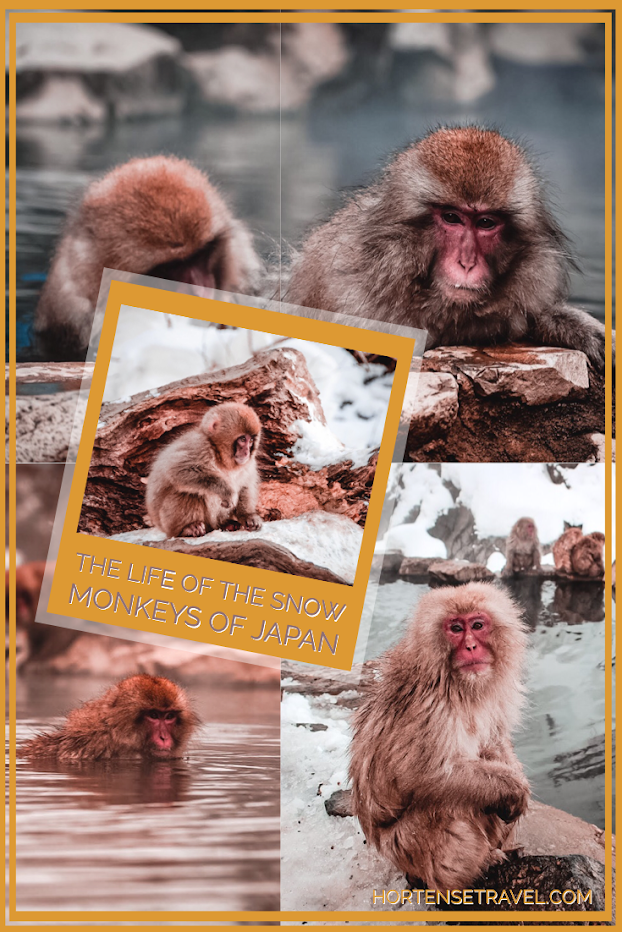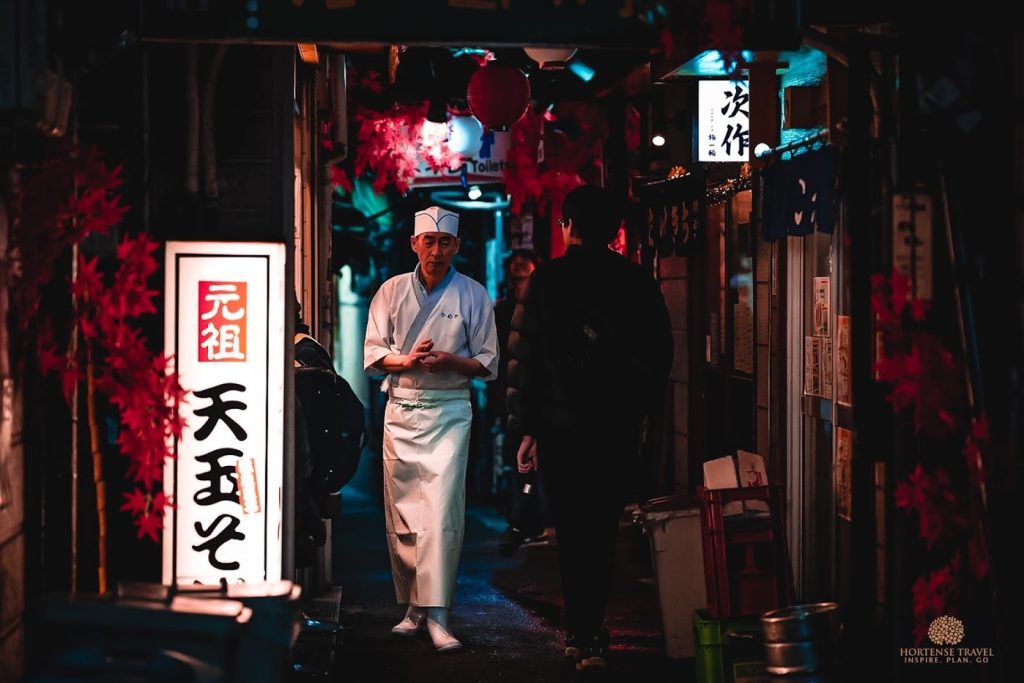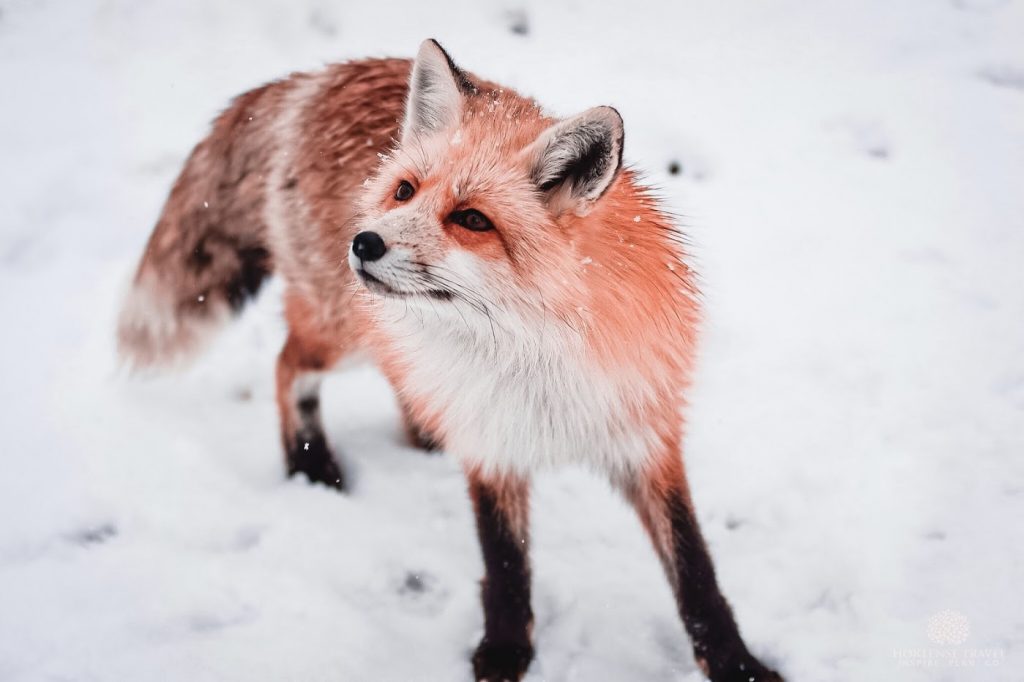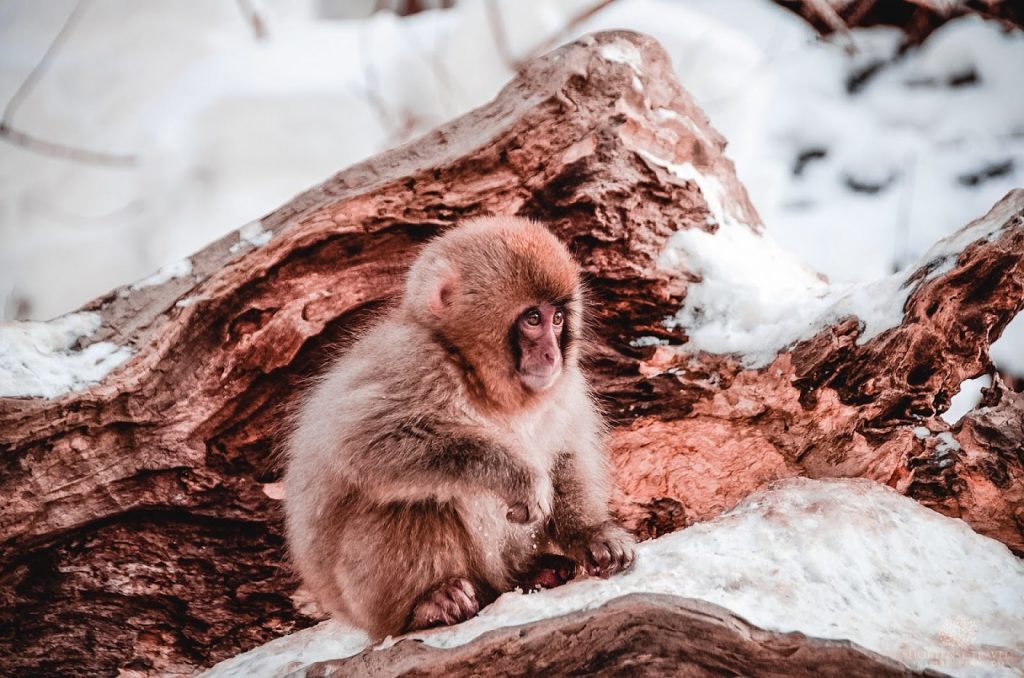
The only thing better than being red in the face from the hot, relaxing curls of steam of an onsen bath is seeing the red-faced Snow Monkeys of Japan bathing in an onsen – and yes, I checked it off my bucket list with a bit of planning. The image of these macaques enjoying a long soak has long traversed the globe through postcards and social media posts, through long photo series on nature and travel magazines. What people haven’t realized though is that these scenes have existed since the 1960s.
A brief history of bathing monkeys
Joshinetsu Kogen National Park overshadows the Snow Monkey Park at its base, the latter established in 1964 as these long-term residents faced the consequences of expanding tourism. As more and more ski resorts were commissioned in the snow-laden region of Nagano, the constant presence of loggers chased these Japanese Macaques monkeys out of their natural habitat; the thick forest of the national park.
Feeling threatened, the monkeys slowly migrated towards local farmland in the valley. This resulted in legal monkey hunting to protect the people’s crops until the need for a conservation area was recognized. Luckily for the monkeys (and us), local resident Sogo Hara pushed for a monkey park so that man and animal could live side by side.
Interestingly enough, the monkeys had watched humans bathing in the local hot spring long enough to imitate and adopt the behavior. They’re the only group of monkeys known to enjoy onsen baths.
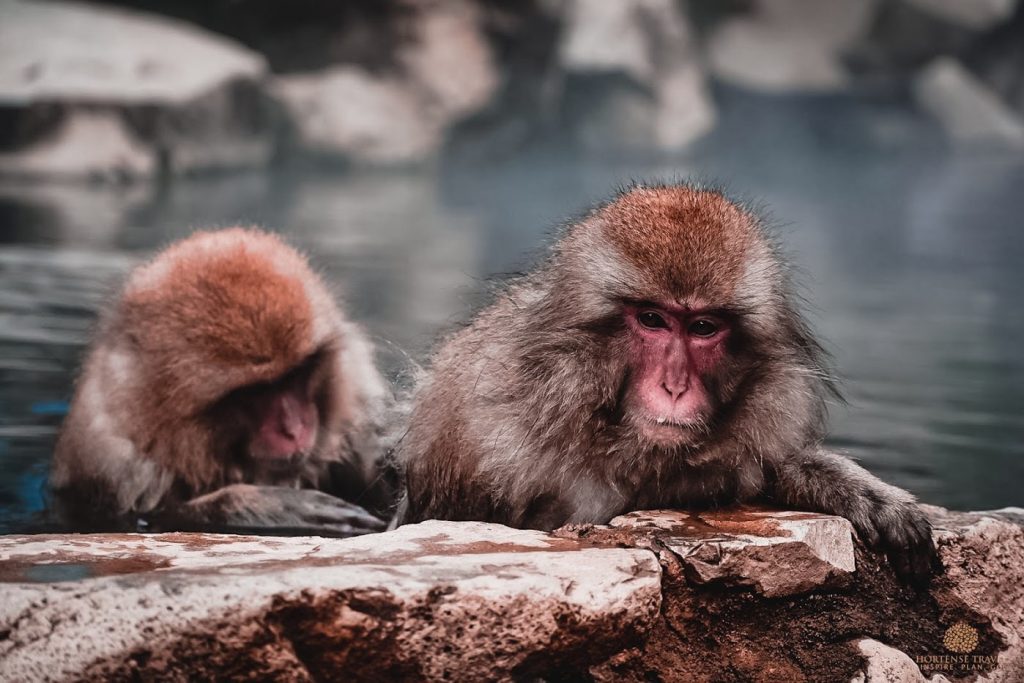
Did you know?
The first monkey to be seen wetting their ears was a young female macaque, relaxing in the outdoor hot spring of a hotel in 1963. As more and more females joined in this unexpected winter treat, researchers soon gathered enough data to realize that this behavior helped reduce stress hormones. While the monkeys are capable of retaining their normal body temperatures through freezing temperatures thanks to thicker winter coats, the hot springs reduce the loss of heat. Eventually, these monkeys learned to enjoy hot springs regardless of the season.
First glimpse of Jigokudani
Yokoyu River flows through towering cliffs and densely packed forestry – it looked like a winter fortress hiding behind layers of snow but you can easily picture it during the summer too; verdant, lush and green. I struggled on deciding when to go since the park is open all year round, but couldn’t resist the authentic winter charms. The mountain-scape is awe-inspiring even behind the fogged up glass of the train we had to take to reach the closest station; the river winds along the tracks in a hot, steaming stream.
It is this natural source of boiling water that gave the valley its name: Jigokudani. Or, in translation, Hell Valley.
It was cold enough to see my breath in the air when I reached the village train station and then caught a bus ride to the entrance. Depending on whether you get off at the entrance or nearby bus stop, it is a solid 15 minute to 40 minute hike up to the bathing area. Make sure you wear practical shoes! The patchy snow on the ground doesn’t have a very good grip and it is cold enough that residue steam ices over under your feet. While it was warm enough around the actual hot spring pools, I visited early enough in the morning that I could feel the cold through my clothes.
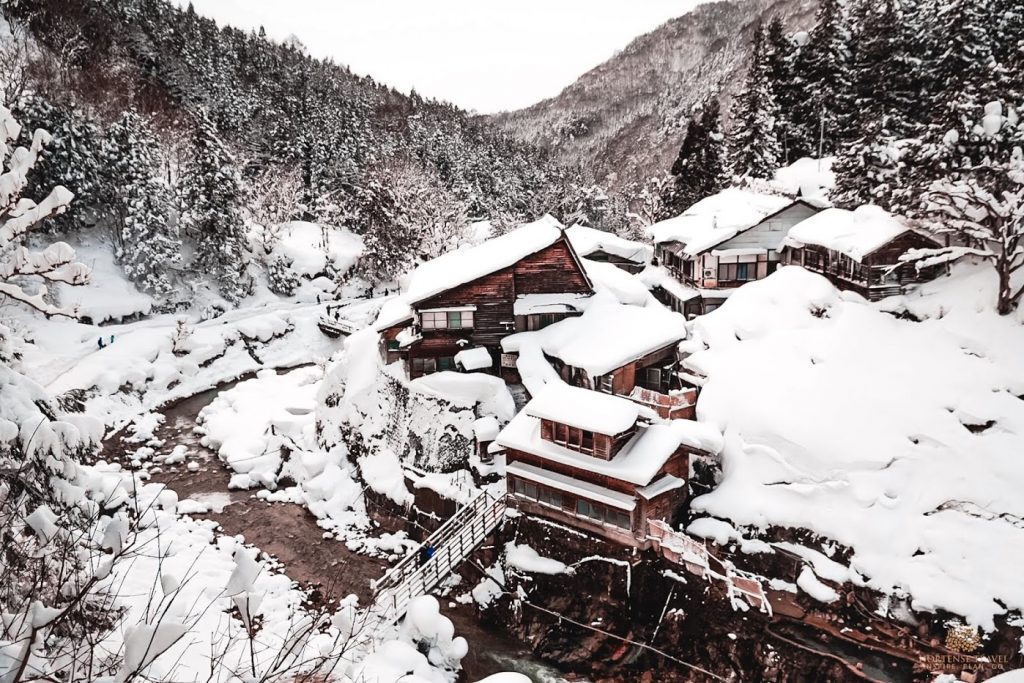
Seeking out the Snow Monkeys
As many blogs advise and so do I, head straight to the center of the park for the highlight! The hike towards the pools was both cold and sweaty in equal measure, but the scenery was magnificent. Rural Japan has a way of making you feel like the long travels were worth it and more; winter Japan doubly so. It was peaceful and all you can hear is the crunching snow and rustling nature. That is until I reached the steaming hot spring pool where the monkeys were.
Backed by snow-capped trees and rising rock faces are man-made rock pools that honestly, looked like a naturally made hot spring. These baths are filled with water from the local hot spring source; in fact, you can probably smell its sulphuric base if you stand close enough.

There weren’t too many people just yet, some standing behind the lax wooden partition while one or two crouched right by the pool borders. Since the park is about conservation and is not a zoo, there is no fencing so that the monkeys can run wild.
I was fortunate enough to see a bunch of these red-faced creatures lounging around the hot spring pool while a few were perched around the grounds. These monkeys are lightly brown-furred with their coats edging towards platinum, the hair around their heads coarse enough that not even spring water is enough to keep it flat. I thought the red of their faces was exaggerated but they really do take on the color of waxy apple. I wonder if it’s the heat that brings the flush out?
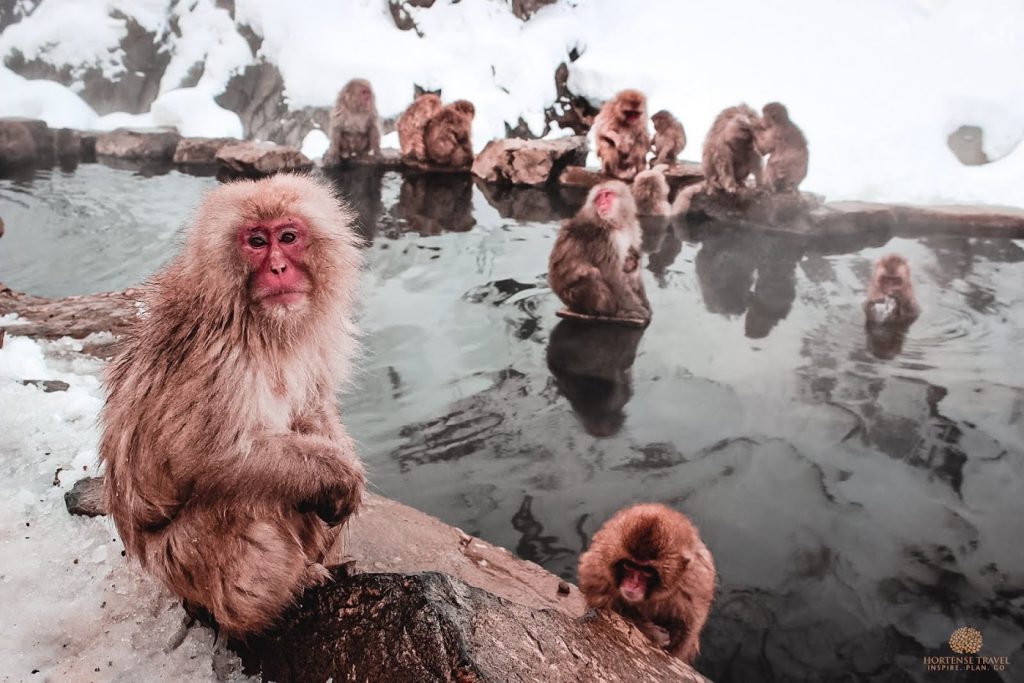
Most of the monkeys were adult-sized and had draped their arms over the hot spring sides, keeping their body submerged from the torso down. They had their eyes closed too, as if falling asleep from how good the boiling water feels. It’s so easy to just stand there and watch their languid relaxation while wishing you were in an onsen too. There were a few more active ones wading to the middle of the pool in slow movements, looking curiously at us humans. The baby monkeys tend to hang onto their parents’ heads or stay perched on a rock instead.
I stayed to watch them for about an hour, spending a decent amount of time snapping photos of their snoozing faces. The monkeys must have gotten used to the abundance of tourists who come to see them because they mostly just ignored us. It’s understandable why we don’t merit their attention though – January and February in the mountains mean temperatures as low as negative tens. If I were the monkeys, I wouldn’t want to move either.

I left before the crowds arrived, well before noon. You can stay longer to watch the park employees feed the monkeys, although they’re free to come and go if they please. Given that the park opens from 9AM to 4PM between November and March (and slightly longer in warmer months), I recommend arriving just before opening time to allow some quiet viewing before bigger tours come by. You only need one or two hours to explore the park.
How to get there
You can pencil in the Snow Monkey Park as a day trip even from as far as Tokyo, or opt for an overnight stay in Nagano or Jigokudani itself. The fastest way to Nagano from Tokyo or any other major city is by Shinkansen; anything other than the bullet train is too time-consuming unless you’re staying in Nagano for a couple of days.
From Nagano Station, you can take either an express bus or train. The express bus departs from the east side of the station directly for Jigokudani Snow Monkey Park, taking just under an hour. Make sure to check the bus timetable as it varies according to season and runs only a few times a day.
I prefer taking the Nagano Dentetsu train line to Yudanaka Station. It takes between 40 to 70 minutes depending on whether you take an express or local train and at a much cheaper cost. From Yudanaka Station, you can transfer to a bus in the direction of Kanbayashi Onsen or Snow Monkey Park. The bus ride lasts around 10 minutes.
Consult this website for travel specifics in minutes.
Some people choose to drive there too! This is the best option if you’re in a group, or already planning a week-long stay in Nagano.
Special passes & tour packages
If you’re on a tight budget, consider purchasing a Snow Monkey 1-Day Pass from Nagano Station. Not only does it cover the entrance fee to the monkey park, but it also allows one-day unlimited use of the Nagano Dentetsu buses and trains.
You can also sign up for sightseeing tour packages to see more of Nagano. For instance, plan for a full-day trip starting from Nagano Station, followed by a visit to the snow monkeys and then the historic Zenkoji Temple, rounding off with a sake tasting. You can also opt for a skiing trip with a side of snow monkey viewing.
If you’d like to visit another off-the-beaten-path place in Japan, I recommend the Art Islands.
Rules to remember
To ensure you have a great time and maximize the probability of seeing these monkeys, here are a few slick rules to remember:
They’re most likely to appear in the winter. Yes, the snow monkeys do like bathing all year round but there is no guarantee that they will appear in warmer months. January and February rank with the highest possibility of monkey sightings as the freezing temperatures tempt them out from their forest homes into hotter waters.
Don’t forget that these monkeys are wild animals! They might let us gawk at them when they’re bathing but it doesn’t mean they’re friendly. Don’t attempt to feed them or touch them, and most importantly, bathing with monkeys is strictly prohibited. If you’re curious about sharing water space with them, however, there is a slim possibility that they’ll appear at the nearby Korakukan Ryokan outdoor onsen. Adults with young children are advised to hold on to their children and not let them run around.

Check the website before you go. To guarantee you not waste a trip out, check the park’s official website before heading out. There’s a live camera showing you how many monkeys currently occupy the hot springs.
It isn’t the most accessible place for everyone. Because the park is kept as natural as possible to imitate the monkeys’ habitat, there are no paved roads within the conservation area. Anything with wheels, including wheel chairs and baby strollers, can’t be mobilized. You have to be able-bodied to be able to access the grounds, especially since there’s a hike involved.
There are no refreshments. The facility doesn’t have any food or drink services. It’s simply impractical around monkeys as they’re prone to stealing food when they see it.
There are no fixed holidays. Always consult the website before visiting to make sure they’re open. While the facility is open every day, closures are dependent on bad weather, natural disasters and the condition of the monkeys. Irregular appearance during autumn may affect opening hours too.
Try to avoid hanging or loose items. Cameras and phones are okay, but try to avoid selfie sticks.
Leave the environment as it is. Visitors are prohibited from taking anything from the area, even if it is a sole flower. There are other creatures in the area too; watch out for other wild animals or dangerous creatures such as poisonous snakes and insects.
Where to stay?
I was satisfied with keeping my visit a day trip but given more time, a night or two in Nagano could be a fun experience. Kanbayashi Hotel Senjukaku is top-tier traditional inn featuring the requisite kaiseki cuisine and hot springs. A little bit cheaper but an excellent mid-range resort is Suminoyu. Proximity towns of Yudanaka and Shibu have more budget options, all with their own hot springs to enjoy. You might also consider your snow monkey visit as a tag-on to your skiing trip, in which case Nozawa Onsen is a great ski resort.
You don’t have to be an animal lover to enjoy this experience. The novelty lies with having a hidden monkey recess in a snow-carpeted valley; monkeys that are so like us in unexpected ways. Spare some time for this itinerary! It is a winter scenery you won’t get anywhere else.
